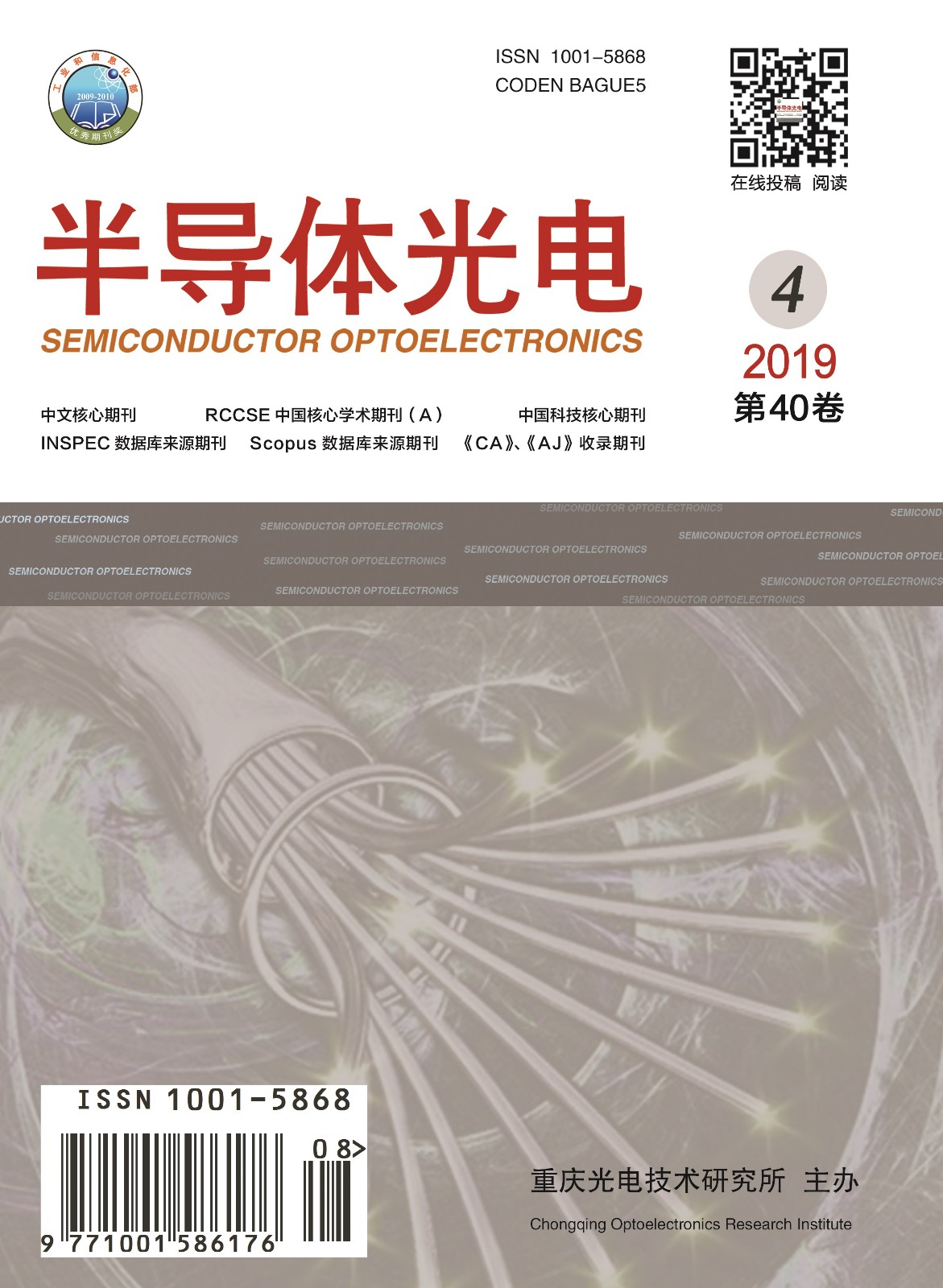半导体光电, 2019, 40 (4): 506, 网络出版: 2019-09-20
LED用石墨烯复合透明电极厚度组合的仿真与优化
Simulation and Optimum of Thickness Combination of Graphene Composite Transparent Electrode for GaN-LED
有限元方法 石墨烯 复合透明电极 温度分布 发光二极管 finite element methods graphene composite transparent electrode temperature distribution light-emitting diodes
摘要
为降低石墨烯(Gr)透明电极与p-GaN之间的肖特基势垒与接触电阻, 进行了将银、金、镍和铂四种金属或氧化镍作为中间层引入它们两者之间的尝试。使用有限元方法模拟研究了Gr与金属或氧化镍的不同厚度组合对LED的光、热和电特性的影响。发现: 透明导电层的透光率和LED芯片的表面温度均随石墨烯和金属或氧化镍厚度的增加而降低; 1.5nm的Ag、Ni、Pt, 1nm Au或1nm的NiOx分别与3层(3L)Gr复合时为优化厚度组合, 其中, 1.5nm Ni/3L Gr为最佳Gr/金属复合透明电极。
Abstract
In order to reduce the Schottky barrier height and sheet resistance between graphene (Gr) transparent electrodes and the p-GaN layers in the GaN-based light-emitting diodes (LEDs), the ultra-thin films of four metals (Ag, Au, Ni and Pt) or one oxide (NiOx) were introduced as a bridge layer between Gr and p-GaN, respectively. The influence of different thickness combinations of Gr and metal or nickel oxide on the optical, thermal and electrical properties of LED were simulated and analyzed by finite element method. It reveals that both the transmittance of the transparent conductive layer and the surface temperature of LED chip decrease with the increase of the thickness of Gr and metal or oxide films. Based on analyzing the electrical and thermal performance of LEDs, it is found that 1.5nm Ag, Ni or Pt, but 1nm Au and NiOx respectively combined with 3-layered (L) Gr are the optimal thickness combination, among which 1.5nm Ni/3L Gr is the best Gr/metal composite transparent electrode.
张淑芳, 钱明灿, 罗海军, 龙兴明, 闫泉喜, 郭扬, 钟将. LED用石墨烯复合透明电极厚度组合的仿真与优化[J]. 半导体光电, 2019, 40(4): 506. ZHANG Shufang, QIAN Mingcan, LUO Haijun, LONG Xingming, YAN Quanxi, GUO Yang, ZHONG Jiang. Simulation and Optimum of Thickness Combination of Graphene Composite Transparent Electrode for GaN-LED[J]. Semiconductor Optoelectronics, 2019, 40(4): 506.



